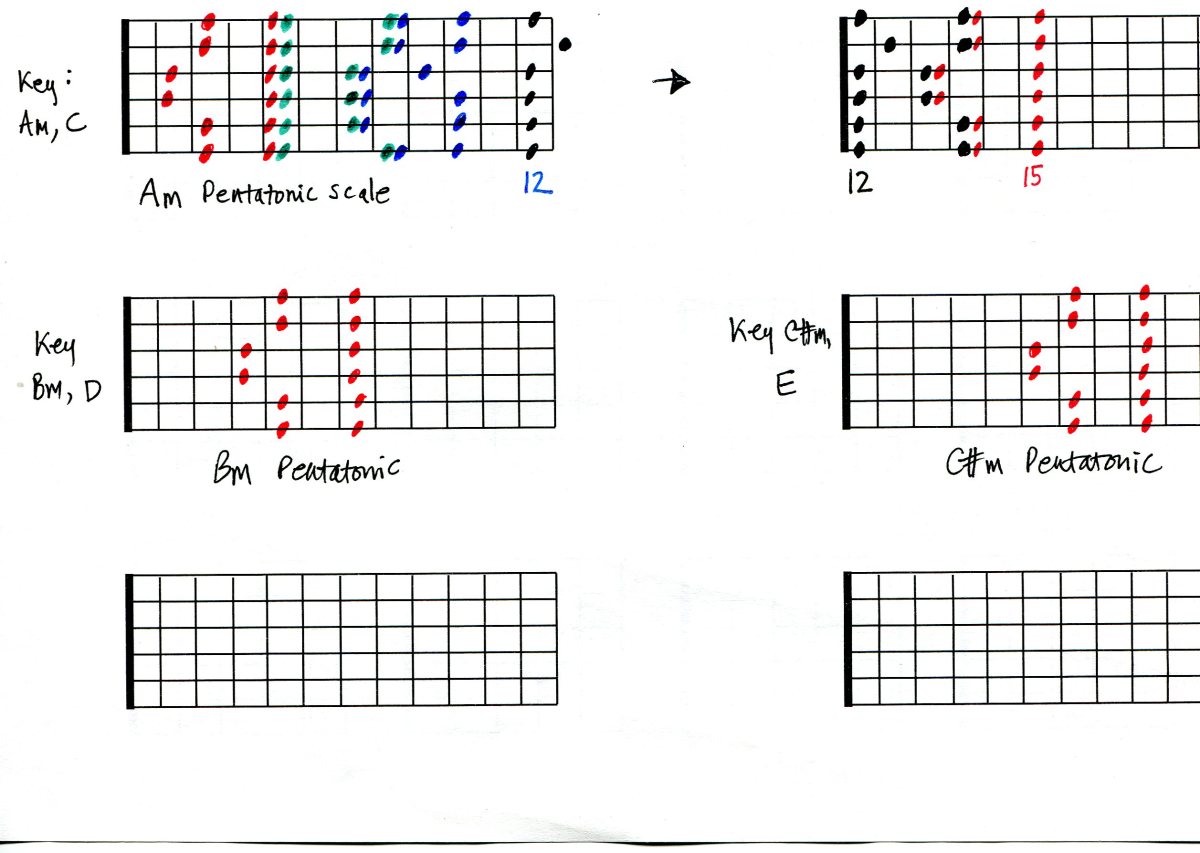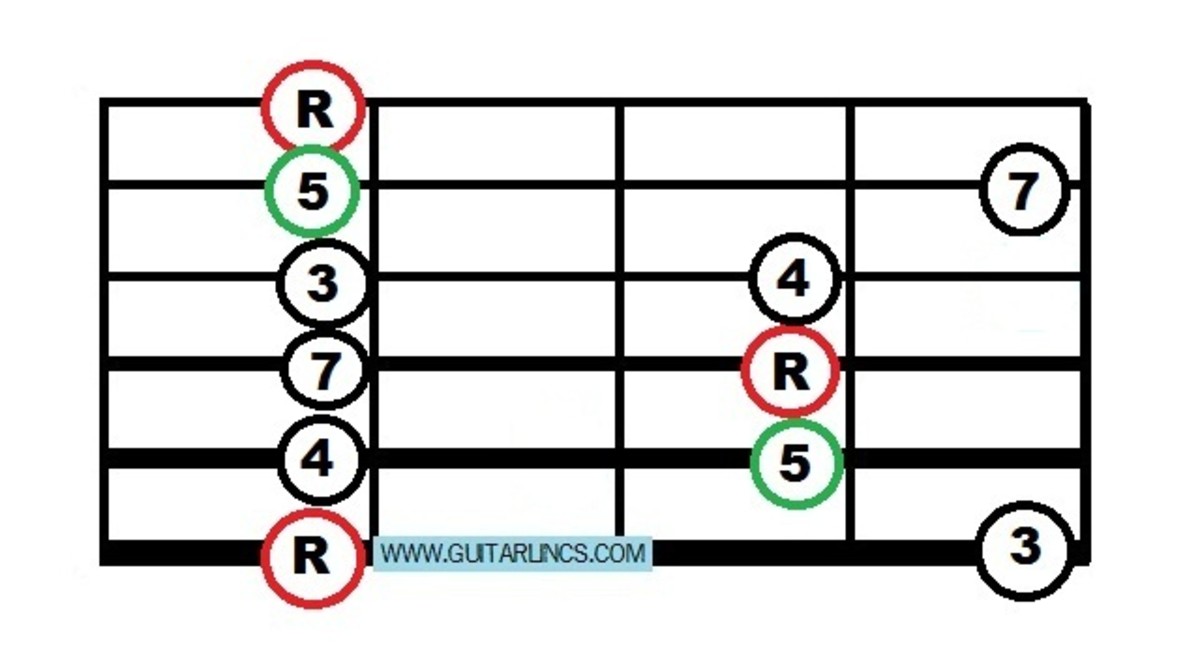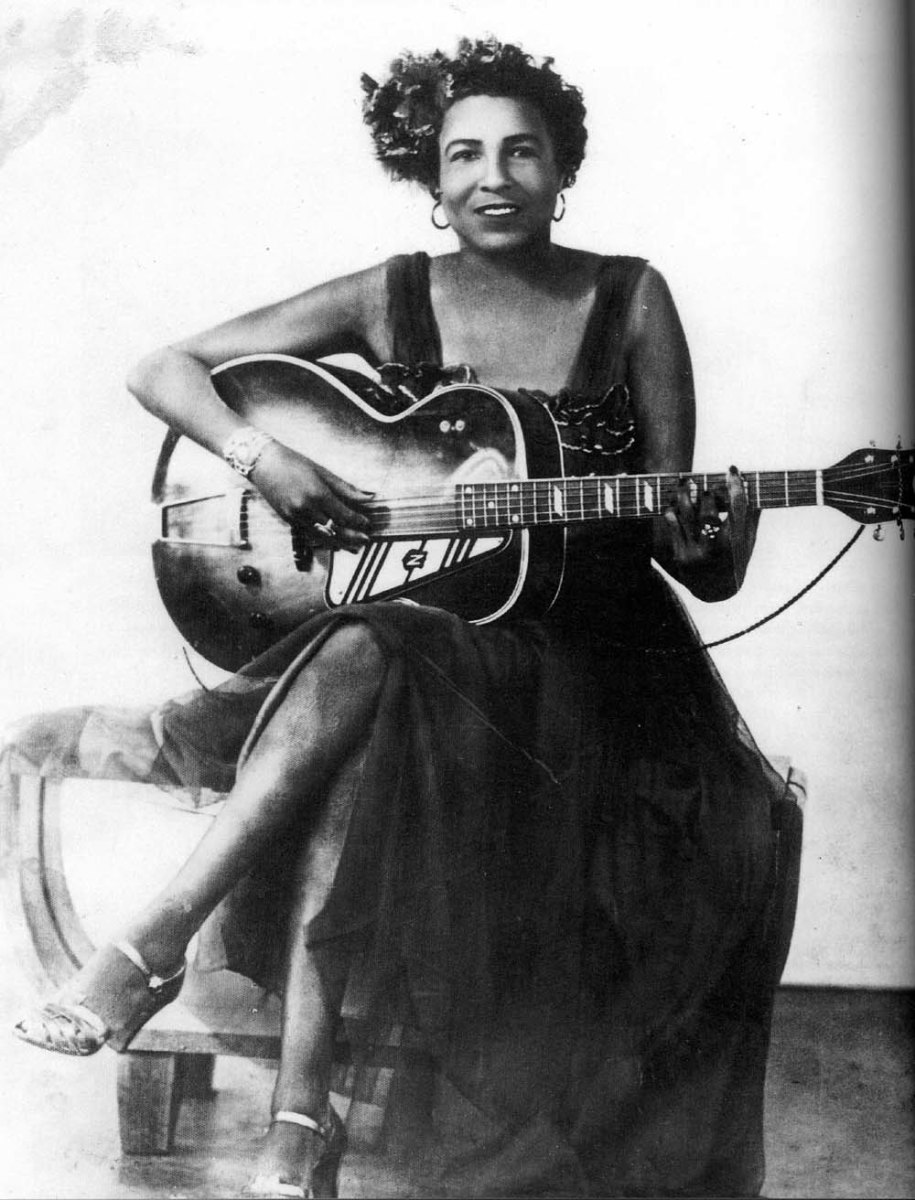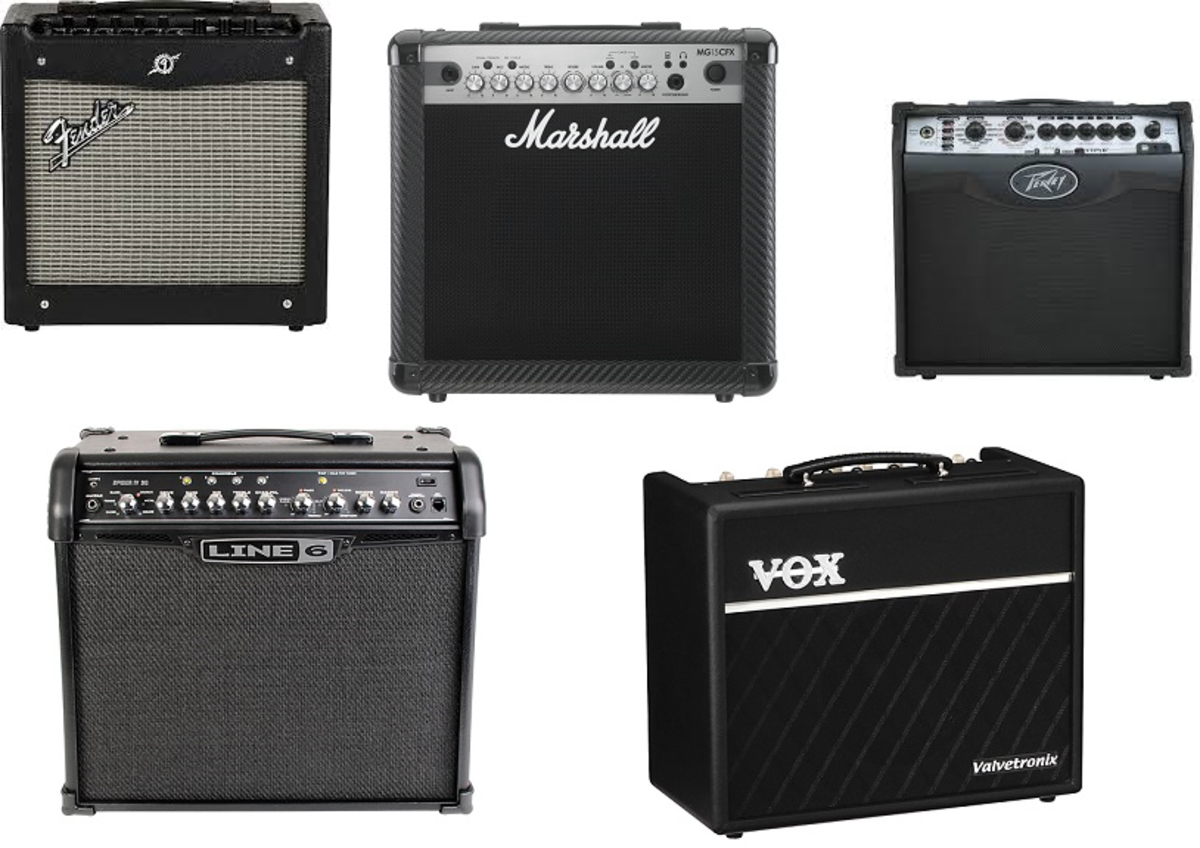Guitar Pentatonic Scales Guide
Intro to the CAGED system
The CAGED system is just a way of classifying chords and scales on guitar. It refers to the C,A,G,E and D shape chords, the five most basic chord forms on guitar, that cover the entire fingerboard. The fret board diagrams below should be read with the headstock on the left, o = open string.
In the same way that this divides the guitar fingerboard into 5 essential areas, the pentatonic scales on guitar are also in 5 different box patterns. The chord and scale patterns are not unrelated! With a bit of practice you will see that the G chord forms in the diagrams are present within the Em pentatonic scale pattern shown in the first example.
You can think of chords as parts of scales used together, and conversely scales as disassembled chords. Here's an analogy - if you took a chord and threw it against a hard surface, it would break up into little fragments, or scales! If those fragments were painstakingly re-assembled, you could make chords out of them!
Guitar fretboard diagrams
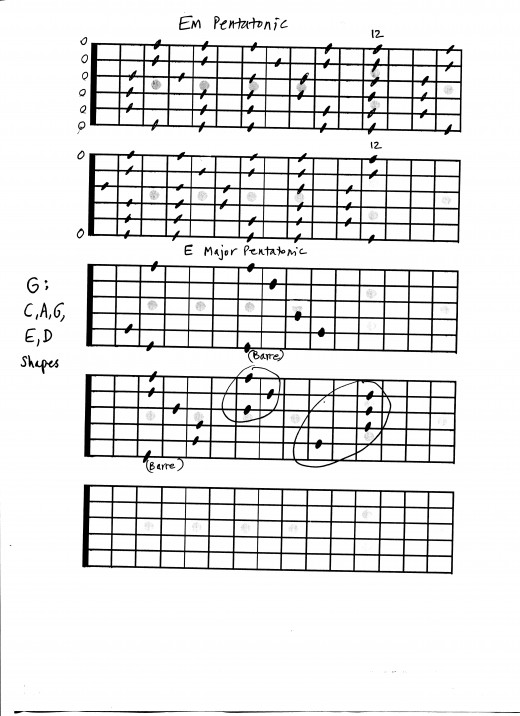
Fretboard diagram
The thick line on the left is the nut. The six horizontal lines are the strings, with the thickest E string at the bottom. When the pattern of notes is making sense, you can move the whole pattern up the neck for all the other keys. The key of Em shown is very easy to use, and you have the option of pull off notes to the open strings, as all the open strings fit with the scale.
Also harmonics will work at frets 12 and 7, this will instantly give you a more interesting sound if you can incorporate these notes.
Minor and Major pentatonic scales
The first example is an Em pentatonic scale. The chords in Em are basically the same as those in G major:
- G
- Am
- Bm
- C
- D
- Em
- F♯m7 b5
This means that you can use this scale over all these chords for playing tunes or improvising.
The second diagram shows an E major pentatonic scale : not a whole new pattern to learn, because it's just the same thing down three frets. From this you can learn that changing from major to minor means just moving the whole pattern up three frets.
The E major pentatonic pattern will work in the key of E, over chords:
- E
- F♯m
- G♯m
- A
- B
- C♯m
- D♯m7b5.
Other keys
All the other keys work in the same way. If you moved the Em pentatonic scale pattern down 2 frets, it would be the pattern for Dm. If you moved it up 2 frets instead, you would have the scale pattern for F sharp minor.
If you are confused by note naming, have a look at my other hub entitled Music Theory basics. This shows all the notes using a piano keyboard. Most theory problems on guitar can be resolved by looking at a piano keyboard. Although all the information is the same, it's just easier to understand on the keyboard.
Why pentatonic scales?
When you listen to rock music, and also a lot of blues and world music, you are hearing pentatonic scales, probably the most common scales in all forms of music. The penta comes from the Greek, and it just means a scale with 5 notes. A normal major scale has 7 different notes, but if you lose 2 of those notes you end up with a pentatonic scale.
The 2 notes left out are the maj7 and the 4th, and because they are the 2 notes that can clash with diatonic chords, you can play solos or write melodies with far less chance of dissonance or wrong notes. In the key of C, the major scale is:
C D E F G A B C
The 2 notes removed are F and B, the 4th and maj7 notes.
C major pentatonic is:
C D E G A
So using pentatonic scales just makes it easier to come up with good solos.
I find this to be a good approach for solos and working out the tune for a song: start with the pentatonic scale as a template, then just add in any extra notes as needed. If you use chromatic or passing notes, it will sound more jazz, bending notes will sound more blues.

